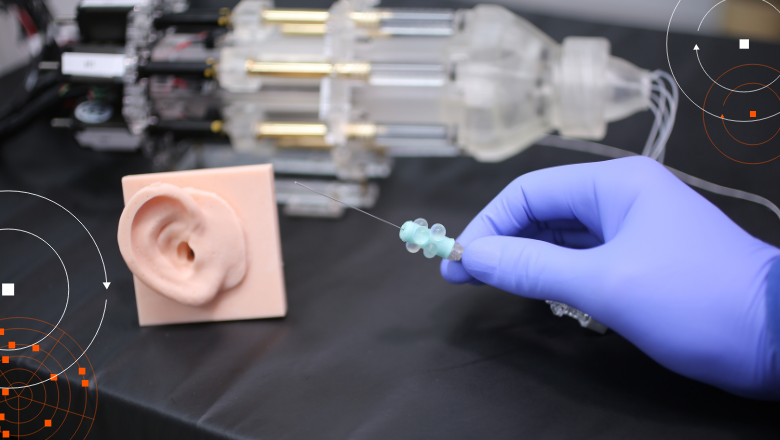Taking this research forward and turning our prototype into a medical device is an exciting journey. Our goal is to make inner ear therapies more accessible, less invasive, and ultimately more effective while paving the way for new treatments that could potentially help millions of patients. We’re extremely grateful for receiving this opportunity.
Dr Lukas Lindenroth, Lecturer in Surgical Robotics, School of Biomedical Engineering & Imaging Sciences
03 July 2025
Using soft robotics and AI to overcome barriers in hearing loss treatment delivery
Researchers from King’s College London have been awarded funding from the National Institute for Health and Care Research (NIHR) to develop their robotic prototype for safe drug delivery to the inner ear.

Hearing loss is the third most common cause of years lived with disability globally.
One in six adults in the UK are affected by hearing loss. Globally, the WHO estimates that by 2050, 2.5 billion people will be affected by hearing loss, with over 700 million needing hearing rehabilitation.
Current treatment options for hearing loss remain limited. While direct drug delivery to the inner ear can be effective for sudden sensorineural hearing loss, the procedure requires trained Ear Nose and Throat (ENT) surgeons, which hinders timely access and broader use.
Progressive hearing loss is typically managed with hearing aids or cochlear implants. Promising new therapies, such as gene treatments for hereditary conditions, are emerging, but their success depends on overcoming the challenges of targeted inner ear drug delivery.
Researchers at King’s College London have been awarded an NIHR Invention for Innovation (i4i) - Product Development Award to develop the next generation of steerable balloon endoscopes for hearing loss treatment delivery, which use soft robotics and artificial intelligence technologies to enable users to perform these challenging procedures.
The work, which is jointly led by Dr Lukas Lindenroth (King’s College London) and Mr Nishchay Mehta (University College London Hospital) is a continuation of the collaborative effort between King’s College London, University College London Hospital and University College London.
The technology was previously awarded the Innovation Prize at the Hamlyn Surgical Robot Challenge, and Dr Lindenroth was supported by a Royal Academy of Engineering Enterprise Fellowship to establish pathways for its commercialisation.
The work will be leveraging the ecosystem at the St Thomas’ MedTech Hub to not only design and fabricate the device with the help of the Manufacture of Active Implants and Surgical Instruments (MAISI) cleanroom facility, but also evaluate it using the simulated operating theatre in the Surgical & Interventional Engineering Facility with the help of 3D printed patient models, human tissues and healthy volunteers.

